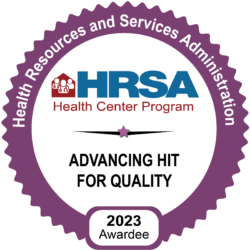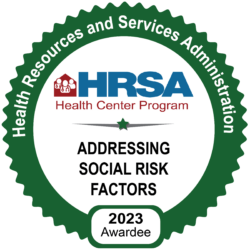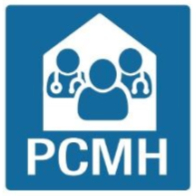February is Low Vision Month: Schedule a routine eye exam.
Growing up, Sena Maddison, Community Health Northwest Florida’s Director of Communications, had regular eye exams but they didn’t catch her vision problems. She startled easily because she couldn’t see where sounds came from, and it was hard for her to see people’s facial expressions when they spoke to her. She didn’t even realize that people could actually see leaves on trees.
“I was born with eyes that are healthy but with a very high prescription and an astigmatism,” says Maddison. “When I was child, they were just giving me eye chart tests for vision, so they didn’t catch my low vision until I was already through the second grade.”
Low vision is when, even with corrective lenses, medicine or surgery, people have difficulty seeing. Low vision can make everyday tasks frustrating and hard to do. Easy activities, like reading the mail, shopping and cooking, become a challenge.
For the many people, like Maddison, who live or will live with low vision, the good news is that there is help available.
February is Low Vision Awareness Month. According to the National Eye Institute, currently 4.2 million Americans ages 40 and older are visually impaired. Of these, 3 million have low vision. By 2030, when the last baby boomers turn 65, the number of Americans who have visual impairments is projected to reach 7.2 million, with 5 million having low vision.
Many people with low vision are over 50 years old, but some children are simply born with it. For children with low vision today, there’s technology to catch the problem sooner. And combining that with affordable and accessible eye glasses, there is no need for low vision to go uncorrected!
When the Community Health Northwest Florida began the Weis Eyes program at C.A. Weis Elementary School, CHNWF’s optometrist Dr. Mary Charbonneau performed vision screenings on all the students, from kindergarten through 5th grade. She found that an alarming 40 percent of the children needed help with their vision.
The eye exams were more detailed and comprehensive than simply reading an eye chart.
“I’m checking both far and near vision,” she says. “And I’m checking the muscles of the eyes for alignment and also looking inside the eyes.”
Dr. Charbonneau used the Spot Vision Screener, a type of camera that takes a picture of the eyes, sitting about 3 feet from the patients. It estimates the extent of nearsightedness or farsightedness, the degree of astigmatism and any misalignments of the eyes.
“It’s a great tool to give us an idea of how accurate is what they’re telling us they can see, versus what they actually can or can’t see,” she says.
Dr. Charbonneau offers tips for anyone coping with low vision. Lighting and contrast, for instance, can make a big difference. Newsprint can be very difficult to read because it can appear gray on gray. And many people with low vision have difficulty with their peripheral vision, making them have to move their head more to pick up on things.
“So they’re scanning — they’re constantly moving their head to scan their world,” Dr. Charbonneau says. “It’s like a puzzle, so both eyes don’t see full amounts of everything. They use one eye and overlap what they see with the other eye, and then they put that ‘puzzle’ together.” Dr. Charbonneau added that because of this, rimless eyewear can make tasks much easier for them.
The important things to remember is to schedule a regular eye exam, especially if you have noticed something out of the ordinary. Diabetics, especially, need regular check-ups . IRIS retinal cameras, used as a screening tool, usually catch eyes problems.
“A lot of little things can add up, and that’s why we want to do a full eye exam,” she says. “Many people need glasses who don’t even realize what they’re missing until somebody points it out to them.”
CHNWF Optometry is conveniently located at 1380 N. Palafox St. Eye examinations at Community Health Northwest Florida are available to anyone, regardless of ability to pay.
“A lot of people just don’t come because they feel that they can’t afford glasses,” Dr. Charbonneau says. “Definitely come on in, and let’s figure out what you need and help you see again!”
Like this program? Thank 340B.
By purchasing medications at a lower cost through the 340B Drug Pricing Program, covered entities like ours pass the savings along to patients. So many of our unique and beneficial programs, such as the Weis Eyes Program, depend on 340B savings but these benefits are in jeopardy. LEARN MORE ABOUT 340B
Do you know someone with low vision?
Independence for the Blind of Northwest Florida can help. They have many programs designed to meet the needs of the visually impaired.
Need an appointment? Call us today.
Optometry at Palafox Two
1380 N. Palafox St,
Pensacola, FL 32501
(850) 436-4630
M-F 7:30a – 4:30p



